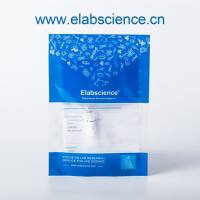α-Synuclein/Amyloid Interactions
互联网
604
Human α-synuclein was originally identified as the precursor of a peptide named non-Aβ component of Alzheimer’s disease (NAC) that was tightly associated to purified Alzheimer’s disease amyloid (1 ). Senile amyloid plaques consist predominantly of the 39-42 amino acid residue peptide Aβ arranged in β-pleated sheets. Aβ is generated by hydrolysis from the transmembrane amyloid precursor protein APP. The mechanism by which the intracellular presynaptic α-synuclein or its NAC fragment becomes integrated in extracellular senile plaques is still unclear. However, in vitro studies have shown that NAC and α-synuclein have the potential to participate actively in the biology of senile plaques since NAC can (1 ) interact with Aβ (2 ), (2 ) form amyloid fibrils (3 ), and (3 ) stimulate the aggregation of Aβ (4 ). α-synuclein can also stimulate Aβ aggregation and interact with senile plaques in situ (5 ). The techniques described in this chapter allow the study of interactions of α-synuclein with senile plaques in brain sections and with Aβ peptides in solution. Information on the following points are found in Jensen et al. (5 ) and references therein: (1 ) Expression and purification of recombinant human α-synuclein; (2 ) methodology for performing sodium dodecyl sulfate (SDS) gel electrophoresis and fluorography; and (3 ) standard histologic techniques for fixing, sectioning, and handling of human brain tissue.









